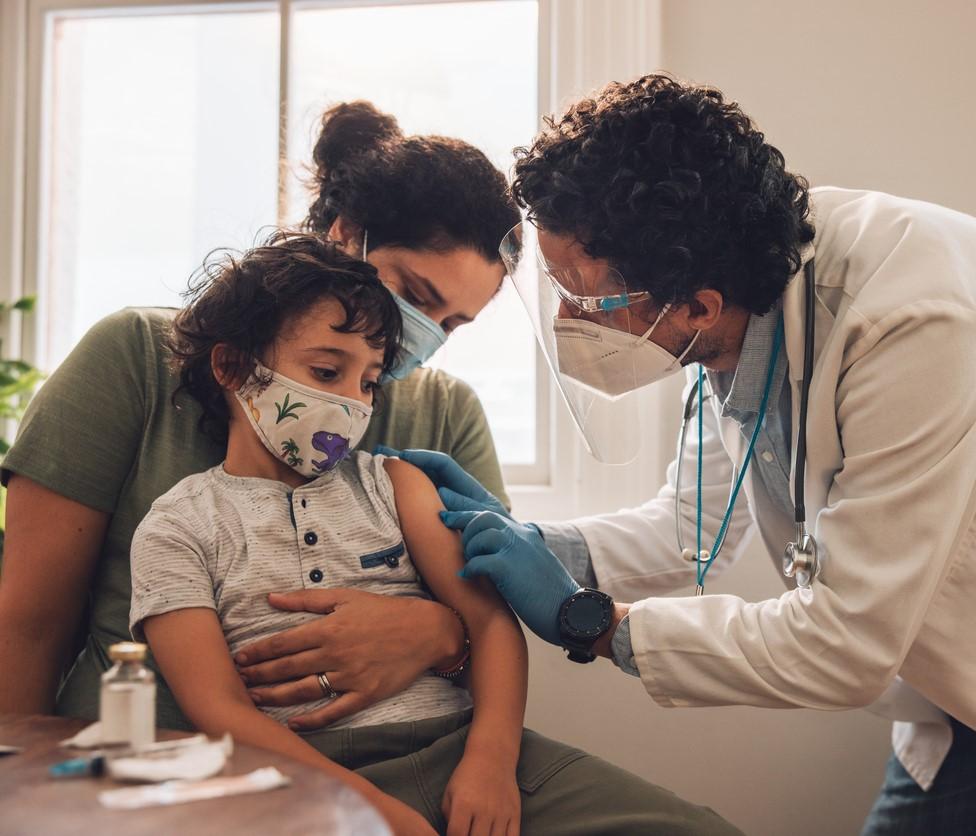Next week, two federal vaccine advisory committees will consider emergency approval and recommendations for two mRNA COVID vaccines for kids under 5, and today White House officials detailed the rollout plans that include an initial distribution of 10 million doses.
Initial 10 million doses poised to ship
On Jun 14 and 15, the Food and Drug Administration (FDA) Vaccines and Related Biological Products Advisory Committee (VRBPAC) will first consider emergency use for the Moderna vaccine when used as a primary series for children ages 6 through 17 years old. Then they will discuss amending emergency use authorizations for both Moderna and Pfizer-BioNTech vaccines for the primary series for children as young as 6 months old.
Pending recommended approval by VRBPAC and a green light from the FDA, advisers to the Centers for Disease Control and Prevention (CDC) will meet on Jun 17 and 18 to discuss whether to recommend the vaccines in the age groups.
At a White House COVID-19 briefing today, Ashish Jha, MD, the committee's coordinator, said the Biden administration is eagerly awaiting a careful review by the groups, but is well into the planning. Once the vaccines are cleared for the youngest kids, the nation will reach a key milestone by extending protection with vaccines to almost every American. "We also know it is important to do this right," Jha said.
Dawn O'Connell, JD, assistant secretary for preparedness and response at the Department of Health and Human Services (HHS), said the vaccine for young kids can be shipped after FDA authorization, but doses can't be given until the CDC makes its recommendations. She said preordering by states and other partners is under way for an initial 10 million doses, split evenly between Moderna andlf Pfizer-BioNTech. She added that distribution will be broad and equitable, with 85% of Americans living within 5 miles of where vaccine will be available.
Federal officials said that, unlike for other age-groups, vaccination of the youngest kids—ages 6 months through ages 4 or 5 years—will mainly take place at pediatrician offices, family medicine clinics, and pharmacies.
Jha said, pending FDA and CDC clearances, vaccination of young children would likely begin in earnest as soon as Jun 21.
Vivek Murthy, MD, the nation's surgeon general, said vaccination of young children will be a powerful tool to cut the disease burden in the youngest Americans. He said 730,000 kids under 5 have been hospitalized with the disease, with nearly 500 deaths reported in the age-group. He added that the government will launch an information campaign, including a superhero-themed toolkit, so parents have the information they need.
FDA reviewing Novavax manufacturing
Earlier this week, VRBPAC overwhelmingly recommended that the FDA approve the Novavax COVID-19 vaccine for emergency use in adults, but so far the agency hasn't made the final determination.
An FDA spokesperson told CNBC that the agency is reviewing changes to Novavax manufacturing before making its final decision. The manufacturing changes were submitted on Jun 3, just days before VRBPAC met.
Novavax's manufacturing partner is India's Serum Institute, and that's where doses would ship from, once the FDA authorizes it for emergency use. The decision to use the vaccine still awaits a recommendation from the CDC, which is considered after the FDA makes its final announcement.
WHO releases SARS-CoV-2 origin review
Last year the World Health Organization (WHO) launched a new group to analyze the origins of novel pathogens, and its first task was to examine evidence on the source of SARS-CoV-2. Some of the experts on the 26-member Scientific Advisory Group for the Origins of novel pathogens (SAGO) took part in the WHO's joint mission to China to investigate the source of the virus.
Today they released their preliminary assessment, which said the closest relatives of SARS-CoV-2 are viruses isolated from Chinese bats in 2013 and Laotian bats in 2020. They said the Wuhan seafood market may have amplified the spread of the virus.
The group said current data lean toward a zoonotic origin, but they said the possibility of a lab leak requires further investigation. SAGO had no new information to review that would support either possibility. It did evaluate new data on blood samples from Chinese donors in Wuhan shortly before the virus was first detected, which suggested that some samples were positive for SARS-CoV-2 antibodies, according to the Washington Post. However, they were later found to be false-positives.
In a video press release, Maria Van Kerkhove, PhD, the WHO's COVID-19 lead, said one of the SAGO report's major contributions is that it spells out studies that need to be done whenever a novel pathogen emerges, including SARS-CoV-2. She said suggested studies include a range of investigations, from genetic to epidemiologic. The list also details investigations in areas where pathogens emerge, covering a range of possible exposures, such as where animals came from and the possibility of lab breaches.
Meanwhile, in other global developments, flare-ups in two Chinese cities—Beijing and Shanghai—led to tightened measures in districts where cases are spiking. Beijing closed entertainment venues in Dongcheng and Chaoyang districts, according to Reuters, which also reported that cases in Shanghai's Minhang district went on lockdown, with more rounds of mass testing planned for the city this weekend.




















